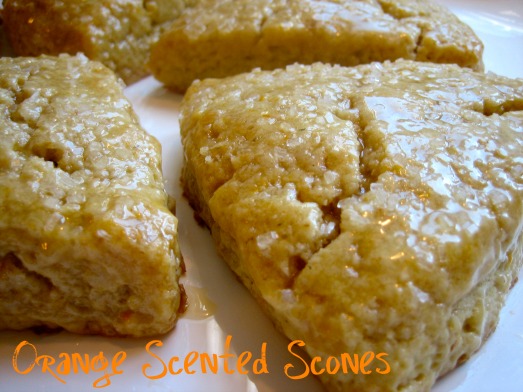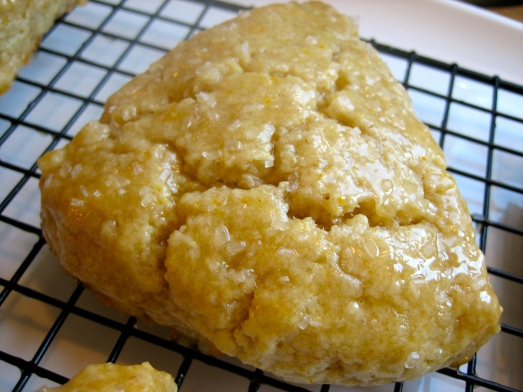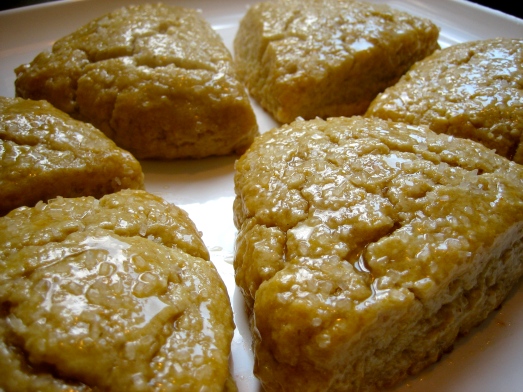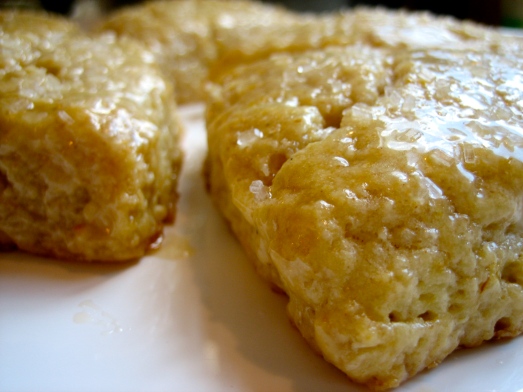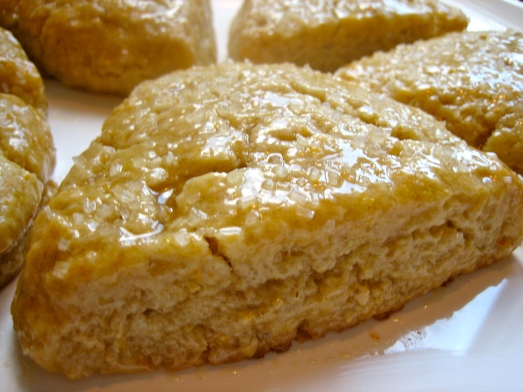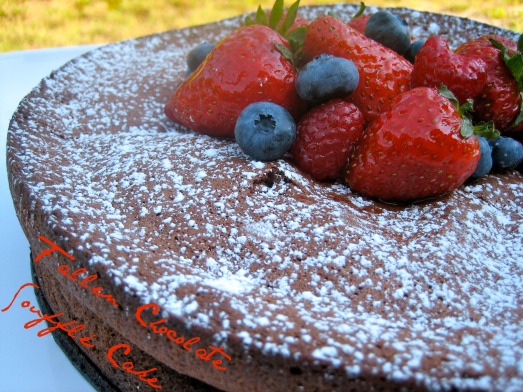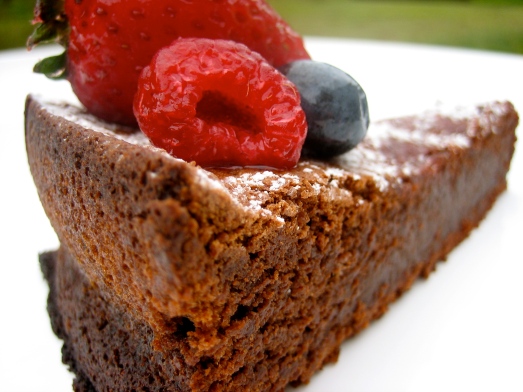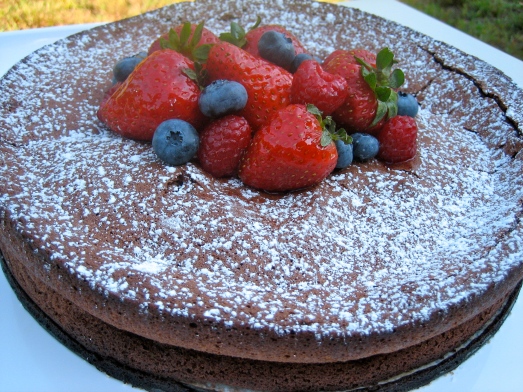
I had no idea when I began “Hot Oven, Warm Heart,” that I would be welcomed with open arms into the baking and blogging community. I have been blessed with the opportunity to meet some truly amazing people, who have blown me away with their kind hearts, passionate souls, and generous spirits. I am so thankful that I have made some dear friends through this process, and I’m looking forward to nurturing these new relationships with each upcoming week and tasty recipe. Who knew a shared fervor for creating muffins, cookies, and cakes had the power to bring people together? Though I was planning on opting out of SMS this week because of some current craziness, I changed my mind immediately when I realized that this week’s host was the absolutely extraordinary Hanaâ – one of the most thoughtful, caring, and talented people I’ve had the pleasure of getting to know over these last few months. No matter how busy my schedule, I knew I had to make time to try her bold and daring recipe selection, Caramelized Onion, Sage, and Cheddar Muffins. This marked the first savory baked good chosen for the group, and provided the chance to attempt something novel and exciting in the kitchen- a challenge I’m always eager to embrace. And boy, am I glad I did. The muffins provided the inspiration for a special fall meal, complete with Roasted Acorn and Butternut Squash Soup, and evoked overwhelming accolades from my family of tasters. But with Hanaâ’s stamp of approval on the recipe, I’d expect nothing less.
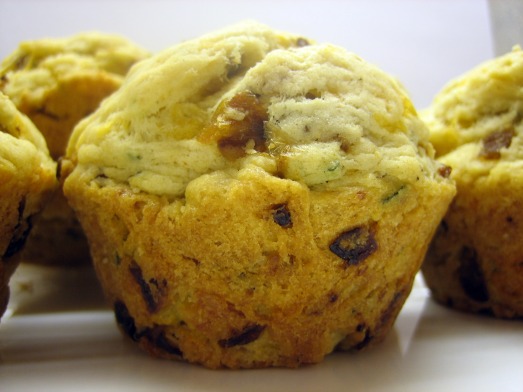
Whether savory or sweet, ‘American-style’ muffins (those made from a batter with a chemical leavener- baking powder or baking soda- rather than a yeast dough like with English muffins) can be divided into two main categories: bread-like and cake-like. The distinguishing factors lie in the technique for mixing the batter as well as the sugar and fat content of the muffins. The bread-like variety typically utilize the “muffin method” of mixing, where the dry and wet ingredients are first blended separately, and then combined and stirred together just until incorporated. In addition, these muffins tend to have less sugar and fat (either melted butter or oil) in the recipe than their cake-like counterparts. The key to producing tender muffins made with this technique is to avoid over mixing. Mixing too much overdevelops the gluten in the flour, resulting in a tough muffin with tunnels and a compact texture. Resist the urge to continue stirring the batter, even if it’s still lumpy- only 10 to 15 strokes are necessary to moisten the dry ingredients, and it’s perfectly acceptable to have a few traces of flour remaining. The lumps in the batter will continue to blend as the muffins bake, and they will disappear after a short trip through the oven. Handling the batter as little as possible (even when scooping and distributing it in the pan), will yield muffins with ideal texture and a soft crumb. I kept this trick in mind while assembling my SMS savory muffins, and was very pleased with the overall consistency of the soft and springy interior.
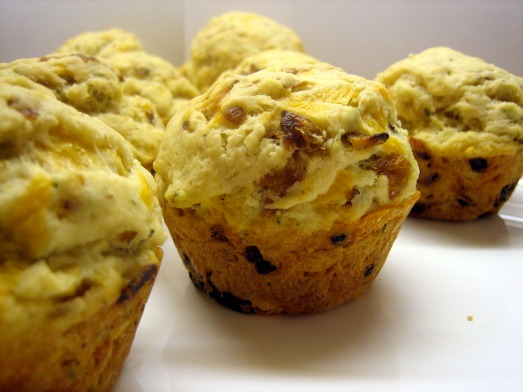
And now to the mix-ins. The harmoniously flavorful, out-of-this-world delicious combination of mix-ins. Honestly, Hanaâ had me at “caramelized.” I don’t think there is any cooking method that more perfectly extracts the essence and inner sweetness of an ingredient than caramelization. Technically speaking, caramelization refers to the oxidation of sugar, and is a complex chemical process that is utilized in cooking to produce the characteristic nutty flavor and brown color of caramel. But practically speaking, it is the gateway to scrumptiousness! Whether it’s caramelized apples in my favorite banana bread or caramelized onions in these exceptional savory muffins, the star ingredient shines center stage after being transformed with some butter and a hot sauté pan. Because the Sweet Melissa Baking Book did not offer instructions on how to prepare the onions, I decided to follow the basic procedure I’ve used in past recipes. I sliced a mountain of Vidalia onions into thin half moons, preheated a large skillet on medium-low heat, and added two tablespoons of melted butter with just a bit of olive oil. After piling up the onions in the pan, I seasoned them with a generous pinch of salt and a little sugar. I prefer to go “low and slow” when caramelizing onions- with a little patience, the onions soften and gradually take on a deep golden brown color. It does take about an hour, but believe me, it is worth every minute.
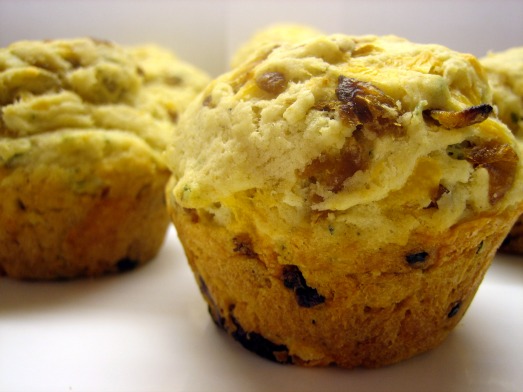
I assembled the remaining ingredients in between occasional stirring, and by the time the onions were completed and cooled, I was all prepped and ready to go. The sage, fresh from my summer herb garden, was chopped, the sharp cheddar was shredded, and my extra special touch ingredient, roasted garlic, was minced to a paste, and whisked into the wet ingredients. (While the onions were cooking, I sliced the top off a head of garlic, drizzled on some olive oil, placed it in a foil packet and roasted it in a 400°F oven for an hour, until the cloves were slightly browned and softened). The idea for this bonus ingredient also came from the brilliant Hanaâ– the girl knows her flavors and it sounded too good to leave out! Since roasting really mellows the bite of fresh garlic, I ended up using about 4-6 cloves, and it complimented the other mix-ins flawlessly. No one flavor outshined another, and while you could certainly distinguish each individual ingredient, they all came together beautifully to produce a knock-your-socks off, one-of-a-kind batch of muffins. The only other change I made with the recipe was to check and toothpick test the muffins a few minutes earlier than the designated bake time. Mine were done at 27 minutes, so take care to keep an eye out towards the end of baking- the last thing you want after all that hard work is dry, heavy muffins because of over baking.
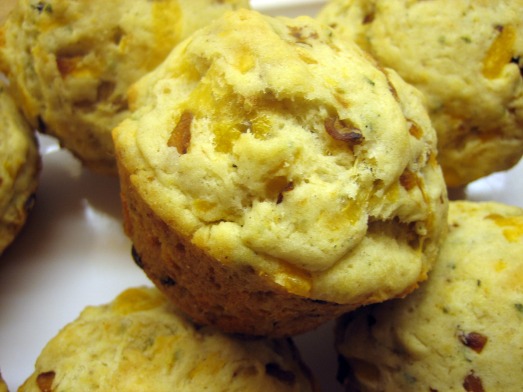
After brainstorming some ideas to design a dinner menu featuring the savory muffins, I settled on making a Roasted Acorn and Butternut Squash soup. It was reminiscent of my very favorite fall recipe, a Butternut Squash and Caramelized Onion Galette (I’ll definitely be making this in the upcoming weeks, and will be sure to share it with you!) I discovered the soup recipe on one of the best cooking blogs on the web, Smitten Kitchen, and subsequently found it on Epicurious. I made a few slight adaptations, including roasting the squash before adding it to the soup. Instead of struggling with a rock hard unpeeled acorn squash and a sharp knife, I simplified the process by cutting it in half (or should I say, calling on my dad’s brute strength to divide it in two), drizzled it with some olive oil and seasoned with salt and pepper. Though I was lucky to find my butternut squash already peeled, I figured I might as well roast that too at the same time. After about 45 minutes in a 400°F oven (tossing halfway through) the butternut squash was tender and slightly browned around the edges. The acorn squash needed a few minutes more, so I turned it over cut side down, and let it go a while longer. By the time it emerged from the oven, I was able to remove the peel and chop it into cubes very easily. I also used the remaining half head of roasted garlic left over from the muffins to replace the raw chopped garlic called for in the recipe. But no matter how you play with the recipe, it is a FABULOUS fall soup, and was a match made in heaven with the savory muffins.
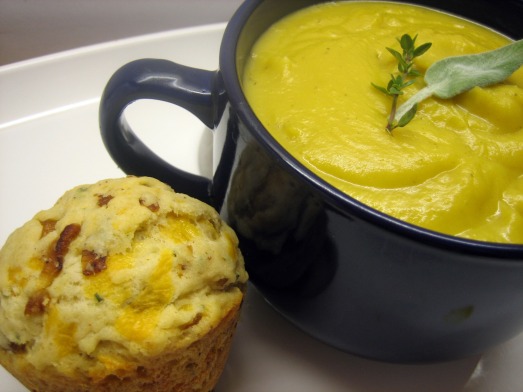
In the end, I couldn’t have been more pleased with the results, and this dreamy fall dinner was the perfect panacea for a blustery, windy, rainy Sunday night here in Boston. My parents raved over both components, remarking that the meal was restaurant worthy and one of my best ever. While I appreciate the positive feedback, the real compliment belongs to Hanaâ– I probably never would have attempted this recipe without a little push… I guess it’s just one more thing I have to thank her for. She is a constant source of inspiration and creative ideas- even dressing up her muffins with the crumb topping from her tuna casserole- super clever, right? This week I implore you- take a minute and check out her fantastic site, Hanaâ’s Kitchen, get your hands on this must-try recipe, break out the mixing bowls, and bake a batch of your own! You won’t be disappointed!
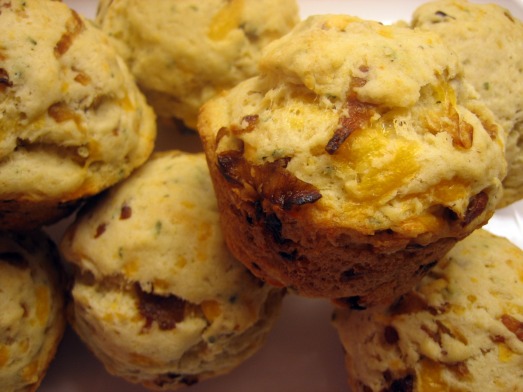
Thank you Hanaâ, for doing a great job as SMS host this week. You are an incredible baker, but more importantly, an even better friend. I appreciate your support and encouragement more than you’ll ever know.


